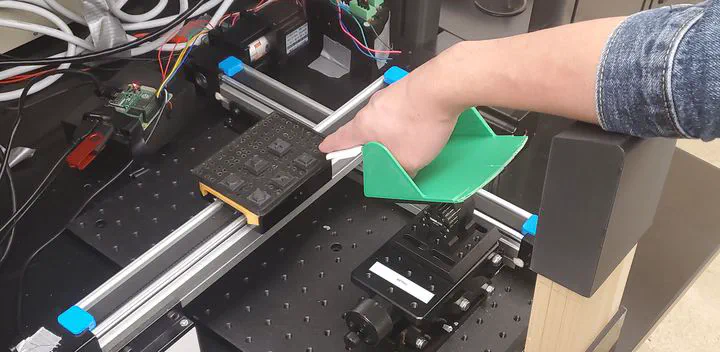Exploring passive presentation strategies for improved interpretation of haptic replay experiences
 Full view of moving platform
Full view of moving platformHaptic replay, in which a passive hand experiences tactile sensations that would normally be acquired through active interaction, can facilitate training of touch-dependent tasks and sharing of haptic experiences. These applications are limited by demonstrably worse interpretation of haptic data under passive conditions.
In this work, we explore a variety of passive presentation conditions in the hopes of optimizing passive perceptual performance for haptic replay. Using a custom 2D linear stage to move shapes against a passive hand, we evaluated shape identification accuracy for three different passive presentation strategies informed by active exploration and compared participant performance to that during active exploration. The highest perceptual accuracy for passive presentation occurred when relative motion mimicked the trajectory of active movement paths at a constant velocity.